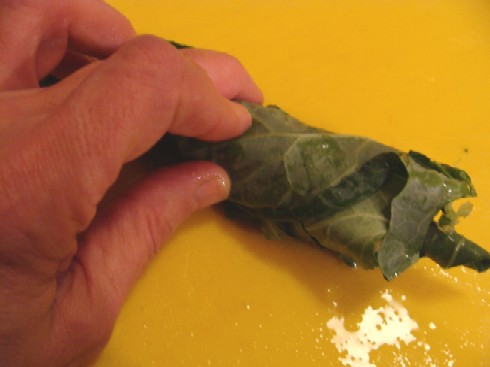SSS – Week 8 – Portuguese Caldo Verde Soup
Two years ago, when I was researching our trip to Spain and Portugal, I followed my usual m.o. and focused a lot of that research on foods of the regions we would be visiting.
I found only one good cookbook devoted to Portugal. “The Food of Portugal” by Jean Anderson. And what a lucky find that was. Not only was it a wonderful book that was as much travel guide as it was cookbook, it also led me to a delightful email exchange with Jean, who graciously shared her years of Portugal travel experience and incomparable advice.
I’ve prepared many recipes from Jean’s book. They never fail to take me back to the meals we enjoyed on our trip. No single dish says Portugal more to me than Caldo Verde. So, when it was my turn to choose a soup for our SlowTrav’s Sunday Slow Soupers it was a no-brainer.
Below is Jean’s description, copied word-for-word from pages 97 & 98 of her book. Enjoy!
Green Soup – Caldo Verde
What makes this potato-thickened soup so green are hundreds of filaments of kale-like cabbage. According to Maria de Lourdes Modesto, star of a Lisbon television cooking show and author of the dazzling Cozinha Tradicional Portuguesa, what Portuguese women use for making caldo verde is the intensely green Galician cabbage (couve gallego), which has large, flat, tender leaves. At country markets you see women stacking the leaves, rolling them into fat “cigars,” then shaving them into the finest of shreds by whisking razor-sharp knives back and forth across the rolls at breathtaking speed. At more modern markets, like Lisbon’s Mercado da Ribeira, rolls of cabbage are fed into giant hand-cranked shredding wheels, each with a plastic bag at the back to catch the flying bits. If Portugal has a national dish, it is without doubt this lusty green soup, which originated in the Minho Province but now bubbles on stoves everywhere regardless of the season or temperature. To be truly authentic, each serving should contain a slice of salpicão (cured loin of pork) or chouriço (garlicky sausage). Obviously, because these Portuguese ingredients are often unavailable here, some concessions must be made. Collards, kale or turnip greens, I’ve found, make a good substitute for the Galician cabbage; spinach may be used in a pinch; even mustard greens, provided you shave them fine enough to cook quickly. As for the sausage, use a Spanish chorizo or Italian pepperoni if the Portuguese chouriço is unobtainable.
Makes 6 to 8 servings
1 large yellow onion, peeled and minced fine
1 large garlic clove, peeled and minced
4 tablespoons olive oil
6 large Maine or Eastern potatoes, peeled and sliced thin
2 quarts cold water
6 ounces chouriço, chorizo, pepperoni, or other dry garlicky sausage, sliced thin
2½ teaspoons salt (about)
¼ teaspoon freshly ground black pepper
1 pound collards, kale, or turnip greens, washed, trimmed of course stems and veins, then sliced filament-thin. (The easiest way is to stack 6 to 8 leaves, roll crosswise into a firm, tight roll, then slice with a very sharp knife.)
The following four pictures are a demonstration for preparing the greens.
Sauté the onion and garlic in 3 tablespoons of the oil in a large heavy saucepan 2 to 3 minutes over moderate heat until they begin to color and turn glassy; do not brown or they will turn bitter. Add the potatoes and sauté, stirring constantly, 2 to 3 minutes, until they begin to color also. Add the water, cover, and boil gently over moderate heat 20 to 25 minutes until the potatoes are mushy. Meanwhile, fry the sausage in a medium-size heavy skillet over low heat 10 to 12 minutes until most of the fat has cooked out, drain well and reserve.
When the potatoes are soft, remove the pan from the stove and with a potato masher, mash the potatoes right in the pan in the soup mixture. Add the sausage, collards and simmer uncovered 5 minutes until tender. Mix in the remaining tablespoon of olive oil, and taste the soup for salt and pepper.
Ladle into large soup plates and serve as a main course accompanied by chunks of Broa. Deborah’s note: (Broa is a heavy yeast-raised corn bread from northern Portugal. The recipe is complicated and involves a 500 degree oven, bricks and steam. I haven’t had the nerve to make it yet. But if any of you are game, it is on page 239 of Jean’s book.









No a souper but I’ll be making this one with Spanish chorizo. I’ll also try the second version with sweet potatoes.
Deborah – this was a great soup! Thank you so much for sharing the recipe and the tips! 🙂
Thanks Deborah, I enjoyed this!
Hi!
I stumbled into your blog today from Whistlestop Cafe Cooking! My husband and I are also those crazy frugally types, living below their means and not racking up credit card debt everyday so we can afford what we consider the “finer” things in life…ya know, road trips, cotton candy at a county fair and TONS OF BOOKS! I think we might have a few things in common…
Nice to meet you!
Deborah responds:
Thanks Peach! Nice to meet you – in cyberspace! Thanks for checking out my blog. Now I’ve off to have a peek at yours.
Wonderful post and photos. The soup sounds fantastic..thank you!
I was looking for the perfect “caldo verde” recipe and this one seems to be the one!!!!! Thank you for all the details. I’m sure my guest will love it!! 🙂